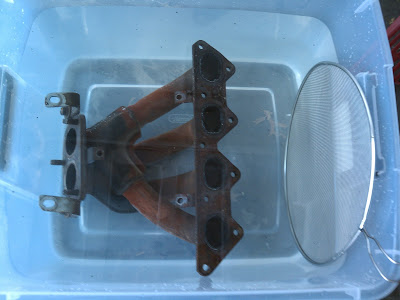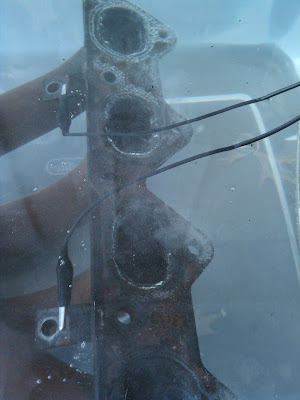Hey folks, I started cleaning my exhaust manifold today and I thought I would share some pictures of the process.
Exhaust manifold before cleaning.


Exhaust manifold (cathode) in electrolyte (water + baking soda), along with anode (stainless steel splatter screen).


Electrolysis in the making.

A video of the setup.
Exhaust manifold before cleaning.


Exhaust manifold (cathode) in electrolyte (water + baking soda), along with anode (stainless steel splatter screen).


Electrolysis in the making.

A video of the setup.

 What wattage is it?
What wattage is it?



 . The process works best on iron, but I think it's possible to use it on aluminum parts as well. Fortunately, aluminum oxidation (rust is the term for iron oxidization) doesn't cause problems like rust does, so it's not really a problem that needs addressing often. Just a note, this process only removes rust, it can't replace metal.
. The process works best on iron, but I think it's possible to use it on aluminum parts as well. Fortunately, aluminum oxidation (rust is the term for iron oxidization) doesn't cause problems like rust does, so it's not really a problem that needs addressing often. Just a note, this process only removes rust, it can't replace metal.
Comment